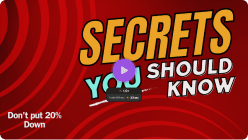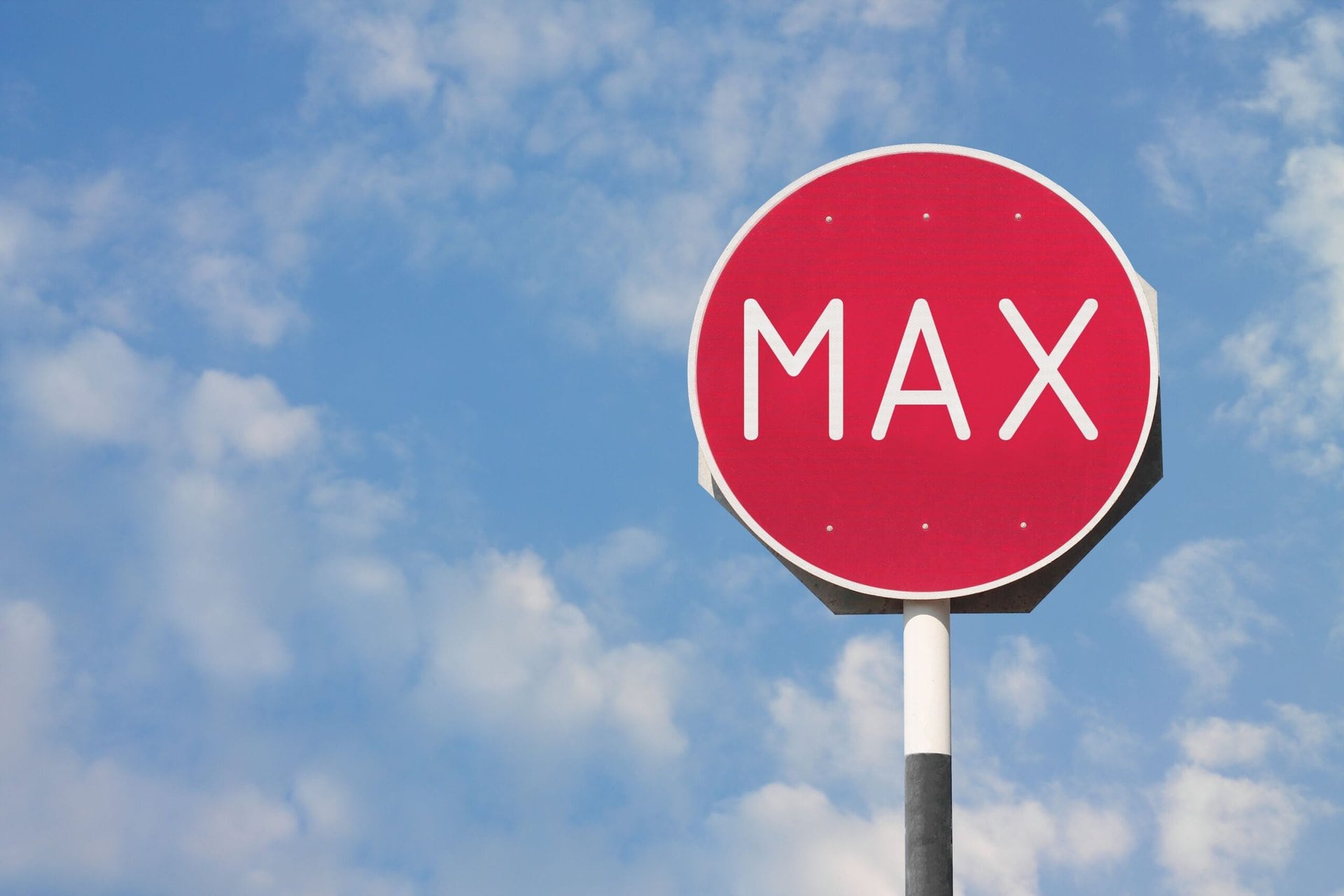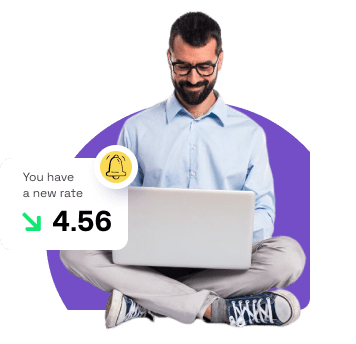Mortgage loan officers are always ready to help potential buyers. One way home buyers can get help is with a 2-1 rate buy down. Here’s how it works.
Research shows that average mortgage rates nearly doubled in 2022. While the average 30-year mortgage rate was under 4% at the beginning of the year, it had risen to more than 7% by December. As of January 2023, it’s back down slightly, hovering around 6.46%.
If you’re thinking about purchasing a new home this year, it’s smart to look for any avenue possible that allows you to save a little money. This is especially true if that avenue lets you reduce the amount of interest you pay on your home loan.
A 2-1 rate buy down program is designed to do just that. Today, we’re sharing the key points about how it works, as well as all of the pros and cons you need to know.
Understanding Mortgage Interest
Unless you can afford to pay for your new home in full up-front, you’ll need to take out a mortgage loan to help finance the purchase. When you take out that loan, you’ll sign an agreement that clearly lists all of its terms and conditions, including how much you’ll pay in mortgage interest. This is known as your mortgage agreement.
Under that agreement, you’ll agree to make regular mortgage payments to your lender for a pre-determined number of years. You’ll keep making these payments until one of two things happens:
- You pay off the loan in full
- You pursue a mortgage refinance and get new terms
The amount of interest you owe is calculated as a percentage of the total amount of your mortgage. In the earlier phases of your repayment period, most of your monthly mortgage payment will go toward the interest portion of your loan. In addition, your mortgage payment will also include the principal portion of your loan.
Borrowers are required to pay mortgage interest on a variety of home-related loan types. Some of the most common ones include:
- Primary loans
- Secondary loans
- Home equity loans
- Lines of credit (LOCs)
Fixed-Rate vs. Variable Interest Rates
Some mortgage interest rates are fixed, meaning you’ll agree to a percentage at the beginning and it will not change for the life of the loan. Others are variable, which means they can fluctuate based on market conditions. Either way, it’s important to understand that mortgage interest compounds.
Over time, interest will accrue on the principal balance of the home loan. It will also accrue on any accumulated interest that you haven’t paid yet. In other words, if you make a late payment on your mortgage, you’ll not only have to pay your usual interest, but you’ll pay interest on the late interest as well.
What Is a 2-1 Buy Down?
When you visit your prospective mortgage lenders, you’ll likely be looking for any opportunity possible to lower your mortgage interest rate. After all, until the loan matures and you start paying primarily on your principal balance, most of your monthly payments will be going toward the interest. That said, you want to make sure you’re not paying any more than you need to!
Thankfully, there are certain programs in place that can help you save money on your monthly interest payment. One of those is a 2-1 Buy Down program.
Only available on certain mortgage loans, this program provides an interest rate reduction on the first two years of your home loan. In simple terms, your standard interest rate will be 2% lower than normal in Year 1, and 1% lower in Year 2. In the third year, you’ll begin paying the rate in full and will continue to do so for the life of the loan.
As you might imagine, this can offer significant cost savings. However, before you sign on the dotted line, you need to know exactly what to expect and how the plan will work. While you may be able to afford the interest during the first two years, the key to succeeding with a 2-1 Buy Down is making sure you can continue to afford it once it goes back up to its original rate.
How Does the Program Work?
Any type of buy down program is designed to help borrowers qualify more easily for a mortgage by providing a lower, more affordable interest rate. There are certain loans that allow buyers to lower their interest rates permanently by buying special “points” from the lender or loan officer.
Called mortgage points or discount points, these are fees that homebuyers pay up-front in exchange for a reduced interest rate. You can learn more about how they work in this article. While this can be an economical approach, it isn’t how a 2-1 buy down works.
A 2-1 buy down doesn’t offer homebuyers a permanently lower mortgage interest rate. Rather, you’ll get to experience a temporary decrease that lasts for a set period of time: two years. Most of the time, lenders will require an extra fee to establish this type of financing agreement. In some cases, sellers or builders will offer to pay this initial fee to encourage more prospective buyers to view their properties.
If a fee is required, that money will usually go into an escrow account for the lender to help offset the cost of lowering your interest rate. While most fees are paid as lump sums, they can sometimes be set up as mortgage points instead.
The Importance of Saving
Though the initial savings might delight you, it’s critical to save your money while you’re in the first two years of a 2-1 temporary rate buydown. Instead of spending that extra money each month, set it aside so you can more comfortably afford your mortgage in the years to come.
Why is this step important?
While your interest rate will start excitingly low, it won’t stay that way forever. Rather, it will steadily increase over the next two years until it’s back up to its normal rate. You want to make sure you’re prepared for when that spike will inevitably hit.
When deciding whether or not to pursue a mortgage, base your decision on the actual mortgage interest rate — the one you’ll start paying in the third year. If you can’t afford that rate, then don’t pursue the mortgage. Deciding based on the first two years alone could set you up for financial stress down the road.
Real-Life Example
Sometimes, seeing numbers in a real-life scenario can make a complicated concept like a 2-1 buy down easier to understand. For this one, let’s assume that you qualify to pursue a 30-year conventional loan with a fixed-rate mortgage, set at a 6% interest rate.
Then, the seller proposes a 2-1 buy down. If you agree to these terms, then your mortgage interest would be 4% the first year, 5% the second year, and back up to 6% for the third year and every other, subsequent year after that.
Now, let’s crunch some numbers.
Let’s say you had to borrow $200,000 over 30 years. If you agree to the 2-1 buy down a program, then your monthly mortgage payments would be $843 during the first year. In the second year, they would rise to $995.
By the third year, you’ll be back up to what your standard mortgage rate should be: 5%. That year, you’ll start paying $1,074 and that’s what you’ll continue to pay each month for the remainder of the mortgage.
What Are the Pros of a 2-1 Buy Down Program?
In many ways, a 2-1 buy down program is a smart decision. Let’s take a look at a few of the reasons it might be right for you.
Afford a Larger Property
This program can help homebuyers afford a larger property at a rate that they can more comfortably afford. Over time, they can save as they ease into their larger, more permanent monthly payment.
However, it’s important for all borrowers to not get starstruck over that enticing first-year rate. It might be low, but it won’t last forever. Year 2 will be higher and the third year will be even higher than that, so make sure you can afford all of your payments, not just the first 24.
Bide Your Time
Do you expect your income to rise steadily over the next few years? There are certain professions where this is the case. If so, then a 2-1 buy down may give you just enough time to beef up your savings before you really start investing in your home.
Once your interest payments rise to the full amount, you should feel comfortable tackling them each month. As long as you know that your income will rise with your costs, this can be a major advantage.
Get Accustomed to Homeownership
Your interest payments will be at their lowest point during those first 12 months. As you make them, you’ll begin to understand what it’s like to be responsible for a monthly mortgage payment.
Especially if you’re a first-time homebuyer, this is a great way to practice financial discipline. You’ll start to grow accustomed to the process of setting aside enough money each month to cover the cost of your payment. It might sound simple, but it can be difficult to balance your budget in this way if you’ve never had to do so before.
This can be a good way to practice. Then, when your payments rise, you’ll already have the habit and foundation in place.
Sell Your Property Quicker
A 2-1 buy down program can also benefit sellers. They can often sell their homes easier and much faster if they agree to pay the initial fee to initiate this program for potential buyers. By advertising this offer, they can usually draw additional buzz around their listing, and bring new buyers to their doorsteps.
If your house is on the market and it isn’t drawing the type of interest you expected, you may want to consider offering and funding this opportunity.
Likewise, interested buyers can ask their real estate agents about this option if they’re looking at a property that hasn’t seen much traction in a while. The seller could be interested in going that route if it meant selling their home sooner.
However, there’s one caveat that buyers need to be aware of: Double-check the price of the home you’re eyeing, especially if there’s a 2-1 buy down program offered. Sometimes, sellers will increase the asking price of their home to help them absorb the cost of paying for this program. You never want to pay more than you need to, even if the offer seems too good to refuse at first.
What Are the Cons of a 2-1 Buy Down Program?
Now that we’ve covered the reasons why you should look into a 2-1 buy down, let’s talk about a few of the reasons why this might not be an ideal setup for you.
Sellers Can Lose Money
If you’re a seller thinking about offering this incentive, think about what it means to your profit. A buy down will essentially lower the total amount that you can make from the sale because you’re offering concessions to prospective buyers.
Yet, many sellers are willing to look past this fact if it means finally seeing some movement on their listing. If you’ve grown tired of waiting for your house to sell, offering a buy down can get things moving quickly.
Initial Fee
As mentioned, there’s an up-front cost associated with a 2-1 buy down. For most buyers, the program is only worth it if the seller agrees to pay for the initial escrow deposit. Otherwise, if that fee is substantial, it could offset any savings you could hope to gain.
Eventually Higher Rates
Unless you know that your income won’t increase alongside your mortgage payments, you could find yourself unable to pay your monthly bill once the interest rate rises. If that happens, your only avenue might be to sell the home.
The good news is that mortgage companies are required to qualify you based on the Year 3 rates, not the first two years. If they believe you’ll be financially stable enough to cover them, you should be fine.
Not Available With Every Loan
There isn’t a one-size-fits-all type of buy down program. Some loan types are excluded and some lenders won’t even offer them. For instance, while you can pursue a 2-1 buy down on an FHA loan and conventional loan.
Should You Pursue a 2-1 Rate Buy Down?
Understanding how they work, as well as all of the pros and cons, does a 2-1 rate buy down sound like a good plan for you? If you know you’ll be able to afford your home even after the rates rise, then it can be a great way to save money and build your credit in the interim.
When you’re ready to pursue a home mortgage, we’re here to help. At District Lending, we can help you find the perfect loan, at a rate you can comfortably afford. Get a quote today and let us do the shopping for you!






